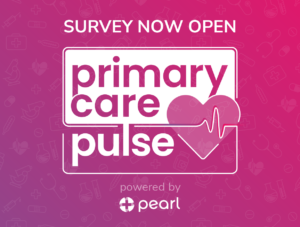The independent doctor, operating autonomously from a large health system, has long been a fixture of society. After all, a doctor who “hangs their own shingle” and uses their experience and skills to build their own businesses is not beholden to any board of directors or management hierarchy. Like an entrepreneur, they forge their own path.
But challenges abound for the independent doctor, making success elusive. He or she has little leverage when it comes to negotiating payments, and since they depend on patient volume, they are especially vulnerable to market fluctuations that can make compensation difficult for the value they create. Because of this, an independent doctor can often come perilously close to becoming akin to a gig worker—and when it comes to healthcare and the gig economy, the two are not the best match.
The alternative to striking out as an independent doctor is, of course, to join a large health system that provides the traditional comforts of employment. As an employee, there is no need for negotiating, as billing is handled by a separate department, and paychecks are steady. But this security comes at the sacrifice of entrepreneurial spirit. What can an entrepreneurial doctor with a desire for autonomy do?
Healthcare and the Gig Economy: A Comparison in Contrasts
The gig worker comparison may seem appealing at first. After all, an Uber driver makes his own hours, while freelance computer programmers work only until their projects are completed. Fitness trainers, consultants, and even some attorneys ply their skills not daily in a 9-to-5 grind, but sparingly, when it’s convenient to them.
The appeal for many is the freedom that independence brings, and in the last decade, gig workers have begun filling roles traditionally taken by full-time employees, giving rise to the gig economy. According to a recent study, there are 57.3 million such workers in the United States, working only between 11 and 30 hours per week,1 and estimates pin the projected gross volume of the gig economy topping $455 billion in 2023.2 Naturally, the phenomenon has spread into a multitude of sectors.
But while an Uber driver or Task Rabbit contractor may be well-suited to such an arrangement, the same might not be true for a doctor. For when it comes to physicians and the gig economy, the comparison lies in the contrasts between doctors and those Uber drivers, freelance programmers, fitness trainers, et al.
The most glaring contrast is the overhead for being an independent doctor. On the operational side, independence also means shouldering the burden of billing and payment negotiations—which, when it comes to dealing with insurance companies, means operating from a point that lacks the leverage large health systems wield. Imagine being an independent driver without the infrastructure, tooling or networking afforded by Uber, and you will have a sense of the types of difficulties facing independent providers.
In addition, for the sake of financial stability, an independent doctor relies heavily on treating the most patients possible—putting him or her at the mercy of market conditions that could be influenced by a multitude of factors impossible to predict or control.
Finally, an independent doctor is expected to deliver great service, but compensation for the value they create from that great service can be tough to come by.
The Pearl Health Advantage
Industry estimates currently report a primary care physician shortage of around 20,000 doctors. In theory, the doctor operating independent of a large health system should be able to capitalize on this shortage by generating market share. And for those doctors with a strong entrepreneurial spirit, it does seem like a viable path. But since 2018, there have been fewer independent doctors than physicians employed by large health systems.3 Clearly, when it comes to being an independent doctor, all that glitters is not gold.
But there is an answer to the healthcare and the gig economy riddle.
Pearl Health, with its focus on the direct contracting model and physician enablement, can help doctors forge their own path. That’s accomplished by removing the aforementioned vulnerability to volume through stable, capitated payments, as well as utilizing shared savings to expose them to the full economics of the value they create. On top of that, Pearl Health gives independent doctors access to data and a community of physicians that will help them better understand their value in the market.
The perils of an independent doctor following their entrepreneurial drive can turn autonomy into the gig economy—a tough prospect for any physician. But with the Pearl Health advantage, that independence can work.
1 “Topic: Gig Economy in the U.S.” Statista. Accessed June 17, 2021. https://www.statista.com/topics/4891/gig-economy-in-the-us/.
2 Published by Statista Research Department, and Jan 20. “Gig Economy: Projected Gross Volume 2023.” Statista, January 20, 2021. https://www.statista.com/statistics/1034564/gig-economy-projected-gross-volume/.
3 Kane, Carol K. “Policy Research Perspectives Updated Data on Physician Practice Arrangements: For the First Time, Fewer Physicians Are Owners Than Employees ,” n.d. https://www.ama-assn.org/system/files/2019-07/prp-fewer-owners-benchmark-survey-2018.pdf.





